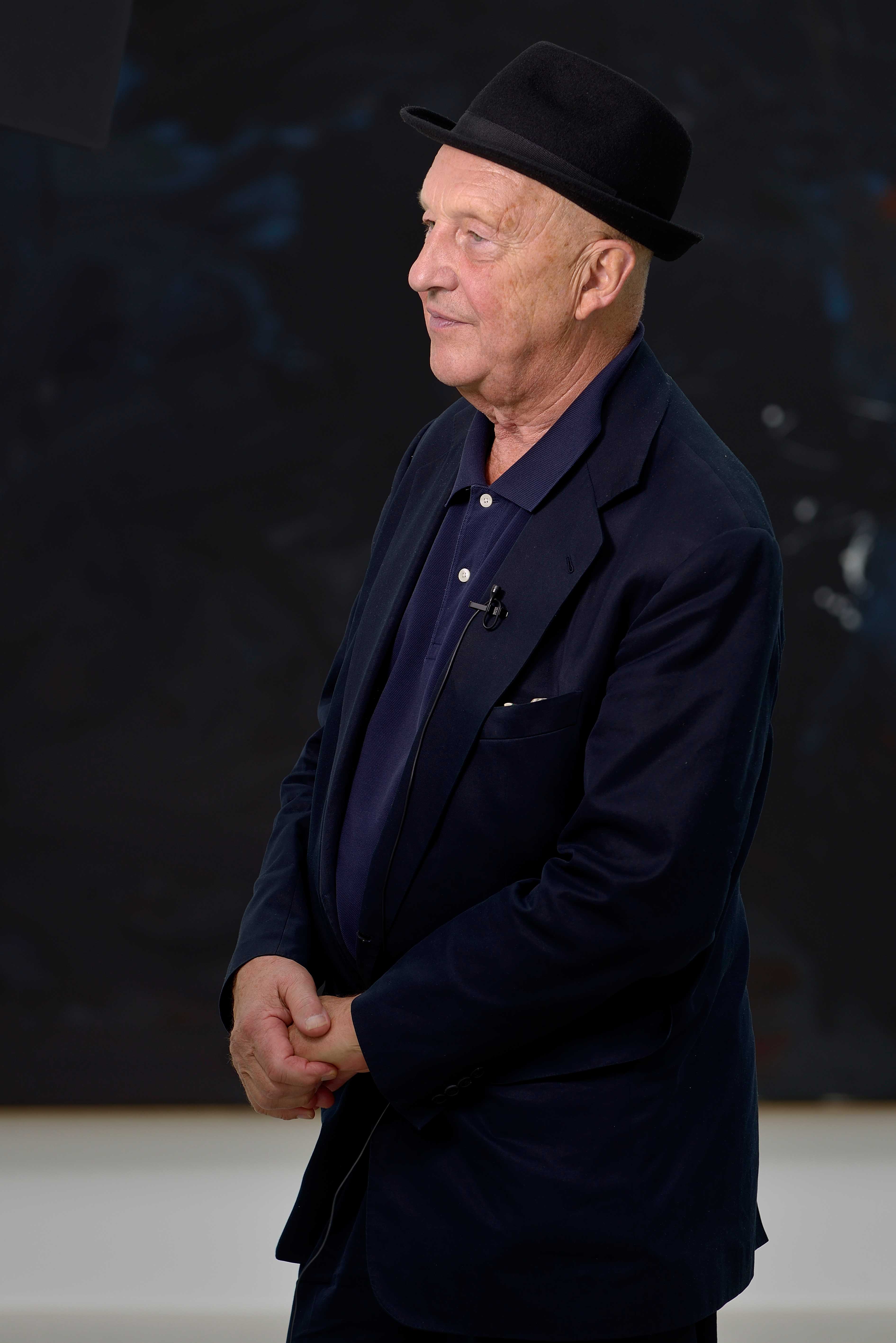Despite being considered one of the greatest painters alive today, Georg Baselitz insists he has “never felt secure”. Now in his 80th year, and the subject of a major retrospective – his first in the United States since the mid-1990s – his journey to artistic preeminence has been far from assured. Controversy and antagonism have always gone hand-in-hand with his artistic genius. “I’m constantly scenting treachery and betrayal,” he says.
Baselitz’s father was a member of the Nazi party, and the artist grew up in East Germany within a Communist system that demanded total acquiescence to the state. This he rejected, as he did pretty much everything else. When his art-school teachers ordered him to paint in a strictly figurative social realist style, he refused – and was expelled for being “politically immature”.
Moving to West Germany did nothing to quell his belligerence. While the post-war art world was in awe of American abstract artists, Baselitz sought a third way, using both figuration and abstraction. The result was his 1963 painting, The Big Night Down the Drain, which depicted graphic and unsettling subject-matter in thick, fleshy paint using putrid, muddy colors. Unsurprisingly, it was confiscated by the police on the grounds of “infringing on public morality”.
But Baselitz was not simply out to shock. He wanted to shake Germany free from its amnesia about the recent past – so in his Heroes series he was even more explicit, depicting war-torn refugees and barefoot soldiers. The scale was epic but the paintings were grubby and bloody. “Why are my paintings ugly?” he comments. “Because I’m German.”
He gained further infamy when he began painting his pictures upside down, a literal interpretation of his need to upset the natural order. “What I admire about Baselitz’s later period work is his capacity to struggle against the ‘spirit of system’ that is a danger to most artists,” says Stéphane Aquin, chief curator at the Hirshhorn Museum in Washington, DC, who is organizing the artist’s retrospective. “He’s just been progressing with such ample strides and strength and power of conviction.” Baselitz’s public pronouncements have often matched his artwork in terms of stridency and impoliteness. “I was born into a destroyed order,” as Baselitz points out, “and I didn’t want to reestablish an order.”
Georg Baselitz, Bayeler Fondation, Basel, until April 28, and Hisshhorn Museum and Scultpure Garden, June 21 – Sept16, 2018
Your address: The St. Regis Washington, DC
Georg Baselitz
(Photo: Charles Duprat)
B.J.M.C. – Bonjour Monsieur Courbet, 1965. Oil on canvas
One of Baselitz’s Heroes series, this painting is a reaction against the clean lines and simple ideological messages of the art of social realism. Its style harks back to the prewar expressionist movement that had been suppressed by the Nazi government and labeled “degenerate”, but its title references the work of the 19th-century realist painter, Gustav Courbet. The result is an artwork that declares itself part of art history, and yet also wants to destroy it.
Geteilter Held (Divided Hero), 1966. Oil on canvas
For Baselitz, disharmony and destruction o en seem the only truths art can convey. A decapitated head sits on a mottled body while a large ear swells horribly. It’s a fractured painting for a fractured nation. Yet it’s also darkly humorous, a play on the distorted canvases of cubism, but here it’s less a single artist’s vision than an entire nation’s psyche that has been fractured.





